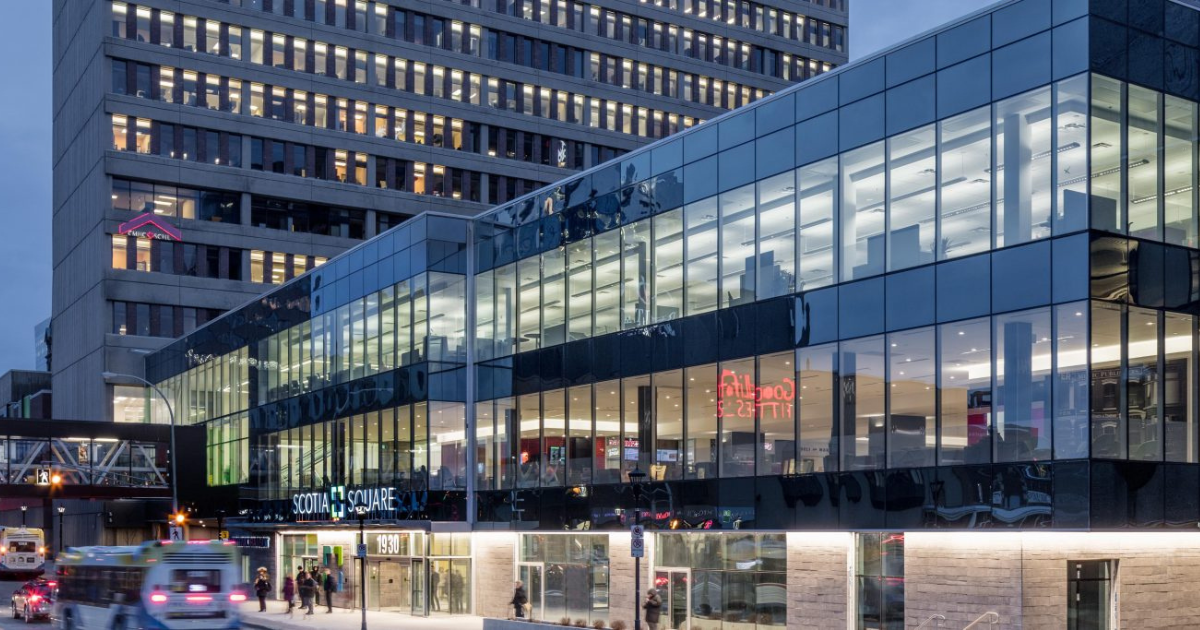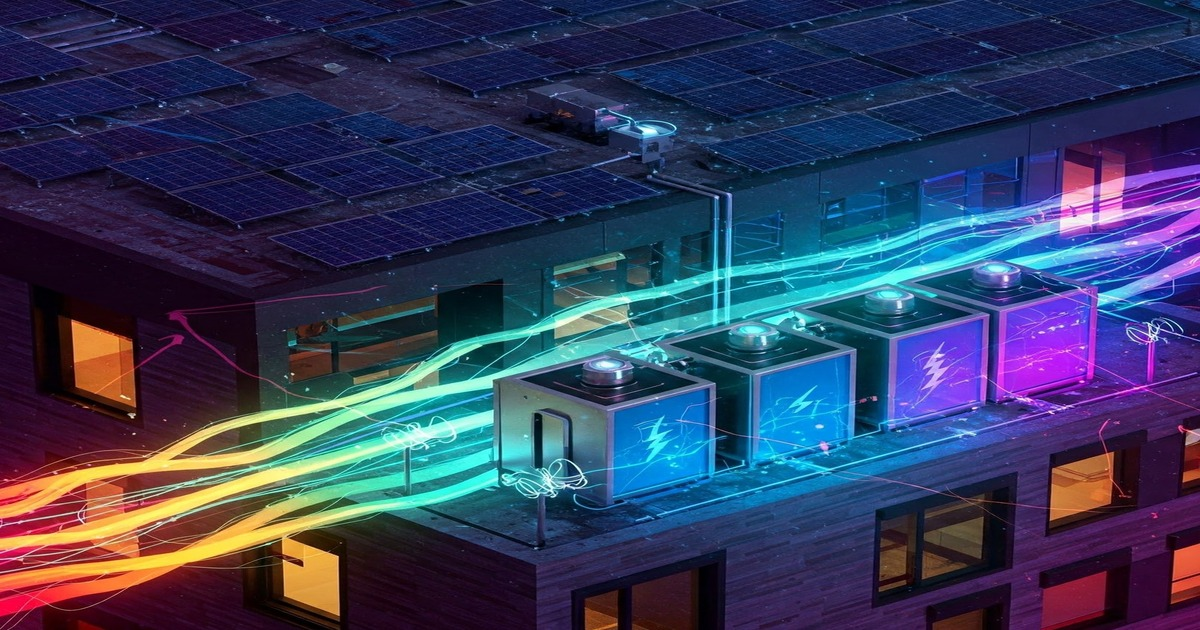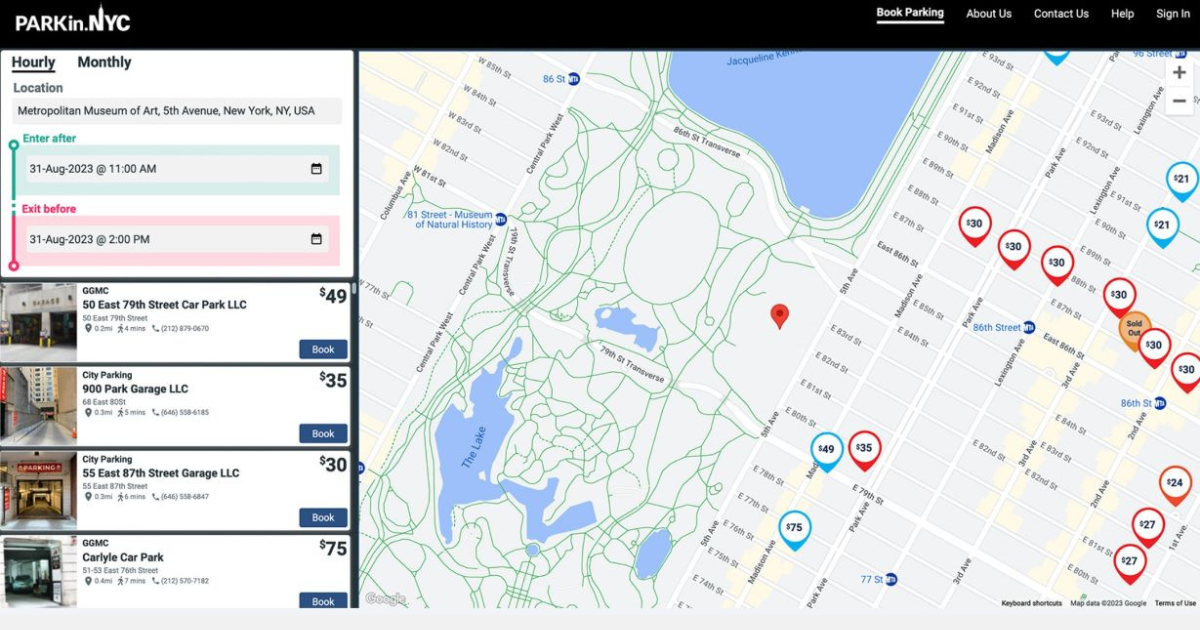Leveraging AI to Optimize Your Building’s Energy Use

Everyone’s looking for ways to lower energy costs and carbon emissions these days. Is artificial intelligence (AI) the solution?
AI Software Harnesses ‘Free Energy’
AI for HVAC solutions can automatically and continuously optimize existing HVAC systems, while delivering a more comfortable indoor climate. In this case scenario, the AI harnesses a building’s thermal mass to align with the building balance point temperature to make automatic and continuous HVAC energy management decisions based on the short and long-term heating and cooling needs. The AI communicates to the BMS via standard communication protocols.
Most control systems are set to instantly compensate and react for each temperature variation that occurs in a building. But these systems often work against the buildings’ natural thermal inertia, which can lead to the overlapping and waste of both cooling and heating capacity.
The application behind Ecopilot®, which harnesses existing thermal energy, is based on the building’s “partitioning” into different thermal zones, each with its own thermodynamic properties – or ‘personality’. These partitions also consider factors, such as sunlight, the effect of the wind and other known heating and cooling loads. Using temperature sensors, the AI technology collects all the data and proactively adjusts each zone’s centralized supply temperatures in accordance with the client comfort requirement.
Essentially, the system “recommissions” a building’s HVAC every few minutes based on ever-changing internal and external climate variables.
The broader implications for industry, society and, of course, the planet, are enormous. And one of the factors driving such advanced initiatives in building management is the commercial readiness of AI platforms, many of which have, themselves, been driven by the movement for responsible energy efficiency.
AI is all around us, but it’s often invisible and not well understood. Forward-thinking buildings have already discovered how it improves operating efficiency with power demand prediction, better management of lighting, elevators, water and HVAC, increased occupant comfort and even alerting maintenance teams of potential issues.
This is how your building can benefit:
What is AI for HVAC, exactly?
Without getting too technical, it’s basically software that integrates with your building management system (BMS) to help optimize heating, cooling and ventilation, in real time, to deliver the greatest energy efficiency possible. Think of it as a brain that can be added to any building management system. It may sound like science fiction, but the idea of using a building’s natural thermal mass to influence internal temperatures has actually been around for decades. We’re just bringing it to scale.
Every two minutes, the AI analyzes what’s happening in your building, from thermal mass to internal temperature and outdoor conditions. These factors, along with predictive data (e.g., weather forecasts), help it calculate the variable ‘balance point temperature.’ Then, it communicates that data back to the building’s existing BMS system to introduce a new set point. This helps reduce HVAC fluctuations and unnecessary energy use, such as heating and cooling an environment in the same day or at the same time, which happens more often than you might think. It does this all while maintaining occupant comfort within specified zones.
How do I know it will work in my building?
We get this question a lot! Property managers and building owners are cautious by nature, and often hesitant to invest in solutions they haven’t heard of or that seem too technical. To overcome these barriers, Ecopilot offers no upfront installation fees and an energy savings guarantee - you’ll only pay what you save. We’ve been in-market since 2008 and have installed this technology in more than 1,200 buildings across the globe, from commercial facilities to multi-residential buildings to hotels, senior living facilities, labs, and schools. Our customers see an average annual reduction in HVAC energy use of 25%. It’s proven, it’s guaranteed, and it seamlessly integrates resulting in immediate energy savings. It’s a lot less disruptive than, say, a boiler upgrade.
Beyond energy savings, what benefits does this technology offer?
AI adds a new layer of intelligence to existing building automation by using a whole new suite of data for better decision making. Building HVAC runs more efficiently, uses less energy, reduces operating and maintenance costs and lowers carbon emissions, which supports ESG goals and municipal targets - all while keeping occupants more comfortable year-round – a key to any platform. AI is a very effective tool to identify HVAC issues and failures, further supporting long term maintenance plans and efficiency improvements.”
76% off Chief Operating Officers respondents in a recent survey said that increasing automation in both facility and asset management will have a positive impact on operational efficiency.
Success story: Cogswell Tower | Halifax, Nova Scotia
Crombie REIT’s Cogswell Tower, a 50-year-old concrete office building in downtown Halifax, Nova Scotia, installed the Ecopilot® AI solution in 2018 to help save energy across its 14-storey, 200,000 square foot asset. In year one, they reduced gas consumption by 22 percent, electricity by 33 percent and delivered cost savings of 25 percent compared to the two previous years.
“We felt that AI was a large step towards a smarter facility. By taking advantage of powerful analytics, we significantly reduced energy consumption and made great strides in achieving our carbon reduction goal,” said Dan Bourque, Director of Operations, Atlantic, Crombie REIT.
Cogswell Tower is BOMA Best Gold Certified and holds a BOMA Nova Scotia Award of Excellence. Following the AI installation at this facility, Crombie REIT went on to implement Ecopilot® into their downtown Halifax Scotia Square Complex, whose campus includes three office towers and a retail mall. Crombie’s 2021 Annual Report detailed that since installation in 2019, Ecopilot® delivered to the campus HVAC energy savings of 19 percent, cost savings of 17 percent, and CO2e reduction of 1,215 metric tonnes.
Pat Poirier, Manager of Engineering and Sustainability, Crombie REIT commented, "I was skeptical about using artificial intelligence to control our building management system as a means of energy reduction. The results far exceeded our expectations for the entire campus of buildings. For us, this project has been one of the easiest to implement, with the best ROI.”
Visit Ecopilot case studies to view a range of customers utilizing AI for smart energy management.
In over 1,200 buildings, Ecopilot® has reduced energy consumption and cost savings to building owners through innovative, user-friendly, AI-powered technology, that works intuitively to deliver intelligent control of heating, cooling, and ventilation systems. Ecopilot®’s autonomous Cloud solution generates up to 40% annually in savings with a simple payback of just three years. No fee installations, savings guaranteed.
 How does it work?
How does it work? 
This Week’s Sponsor
Read Next
 3/27/2025
3/27/2025
The Convergence of Edge Computing, Cloud, and AI in Building Automation and Smart Buildings In the built environment, we have seen the convergence of Operational Technology (OT) and Information Technology (IT), later expanding to include Workplace Technologies (WP).
 3/27/2025
3/27/2025
DC Power: A Holistic Approach to Energy Savings in Commercial Buildings In today's energy-conscious world, businesses constantly seek ways to reduce their carbon footprint and operational costs.
 3/13/2025
3/13/2025
How to Achieve Eco-Friendly Facility Management Commercial real estate operators and facility managers are focusing on sustainable practices to minimize environmental impact, create healthier workplaces, improve productivity and lower operational costs.
 1/23/2025
1/23/2025
When It Comes To Managing Properties’ Parking, Technology Is Key It’s easy for developers and real estate owners to think of parking as a necessary evil. They know they have to provide it (often, because it’s mandated by code), they understand that prospective tenants and buyers expect to be provided parking, but they haven’t figured out how to maximize its value.





.gif)




